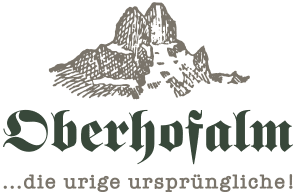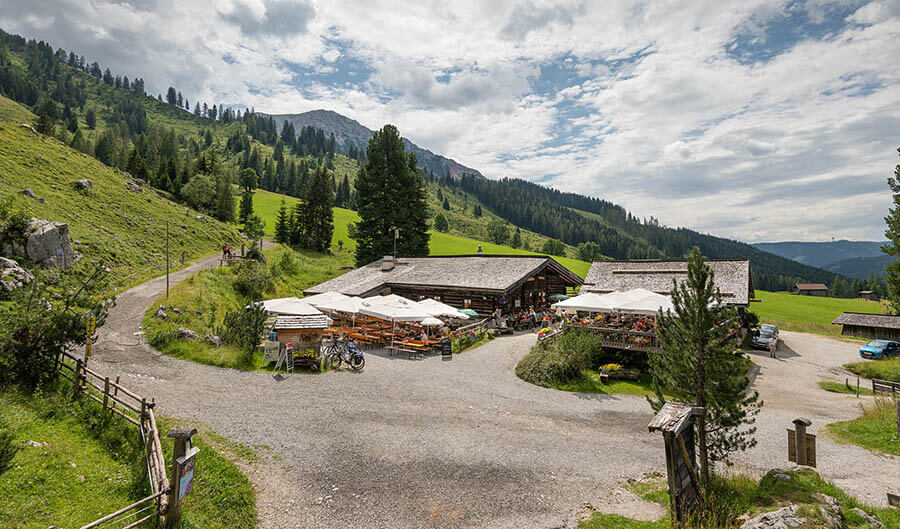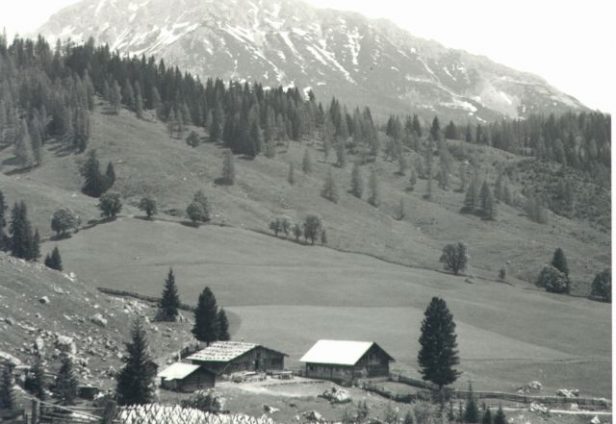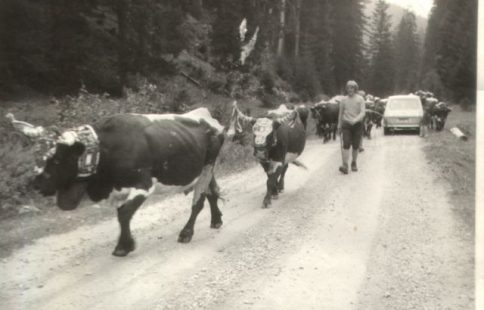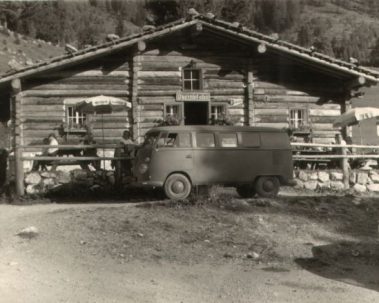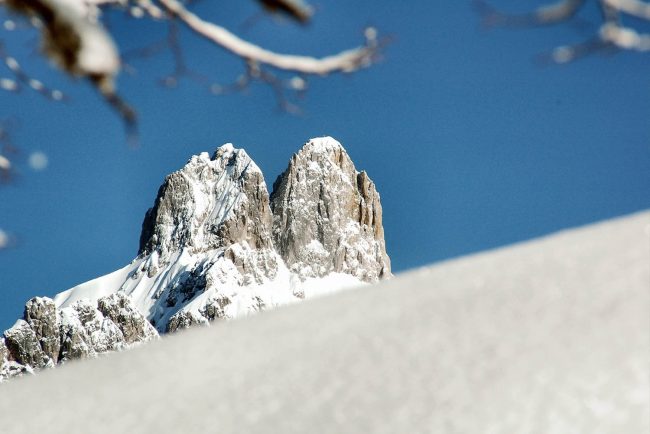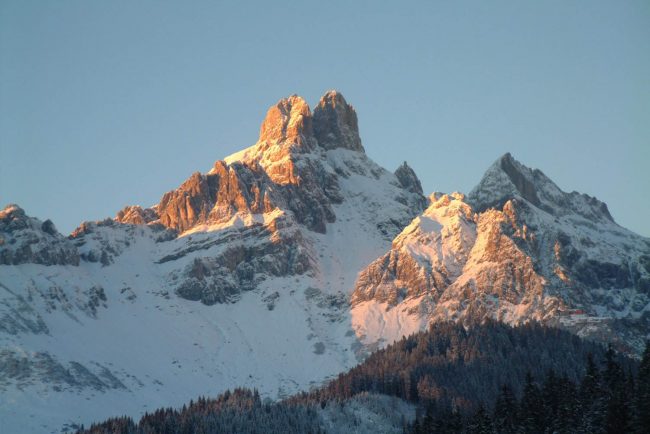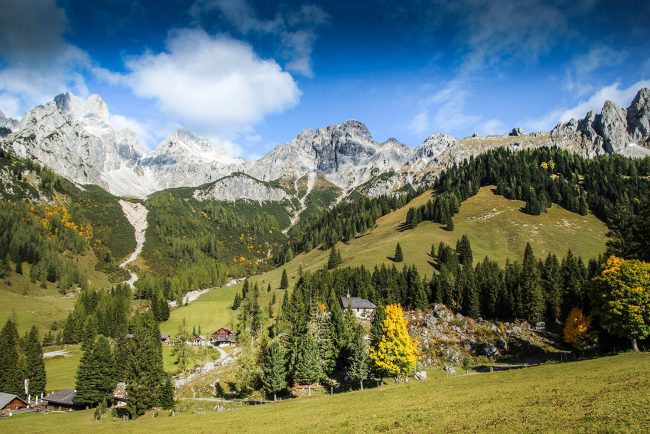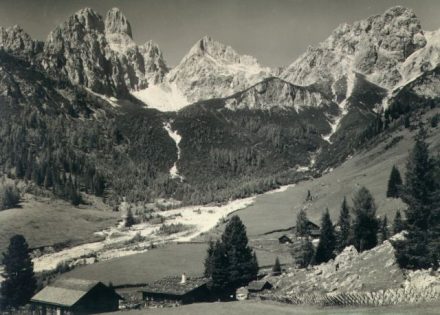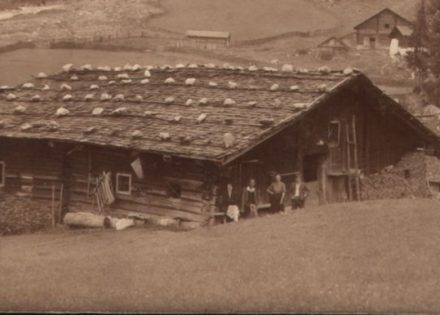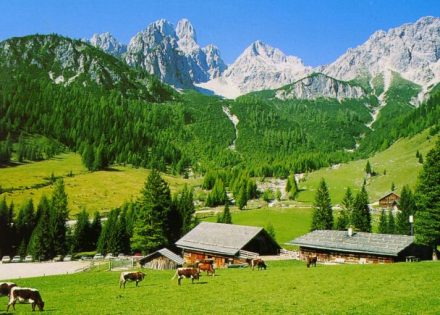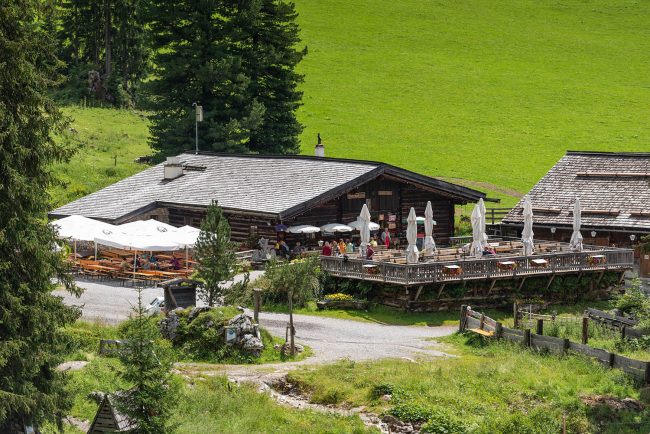350 years of tradition
The “Oberhofalm” lies at the foot of the impressive Bischofsmütze in the beautifully situated valley “Hofalmgebiet”. It covers an area of 463 ha and extends from 1250 to 2948 m altitude. During summer time 120 cattle and horses and about 120 sheep graze here.
Find out more about the Bischofsmütze
The highest peak in the Gosaukamm
With a height of 2458 metres, the “Große Bischofsmütze” is the highest peak in the “Gosaukamm” of the “Dachstein massif”. Together with the 2430 metre high “Kleine Bischofsmütze”, it forms a striking double peak. The two “Bischofsmützen” are separated from each other by the “Mützenschlucht” (gorge) and lie on the border between the municipalities of Filzmoos and Annaberg-Lungötz.
The “Bischofsmütze” did not only get its name from the shape of its summit. The name “Bischofsmütze” also refers to the border between the Archduchy of Austria and the Archdiocese of Salzburg. The Salzburg archbishop “kept watch” from the Bischofsmütze over his Ennspongau. On September 22, 1993 and on October 10, 1993, two sensational rockfalls occurred on the “Große Bischofsmütze”, during which a more than 200 m high pillar broke loose and over 100,000 m³ of rock thundered down to the valley. Thus, the “Bischofsmütze” lost much of its distinctive appearance. Since then it always comes back to rockslides, such as in 1999 and 2001.
Chronicle of the Oberhofalm
From days gone by
The Oberhofalm belongs to the Oberhofgut in Filzmoos and is inextricably linked with its history. This can be traced back to 1285. The most important events are summarized here:
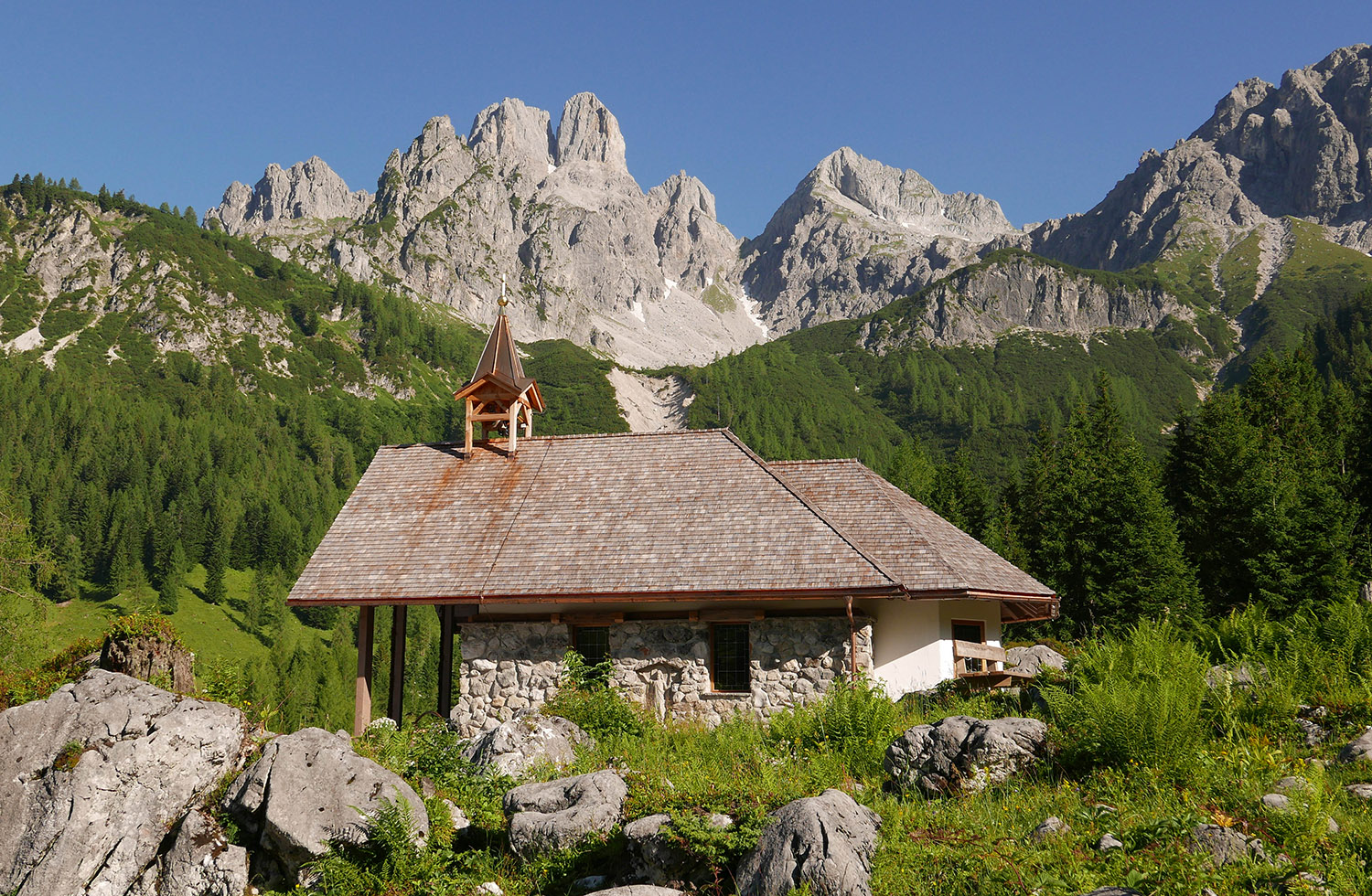
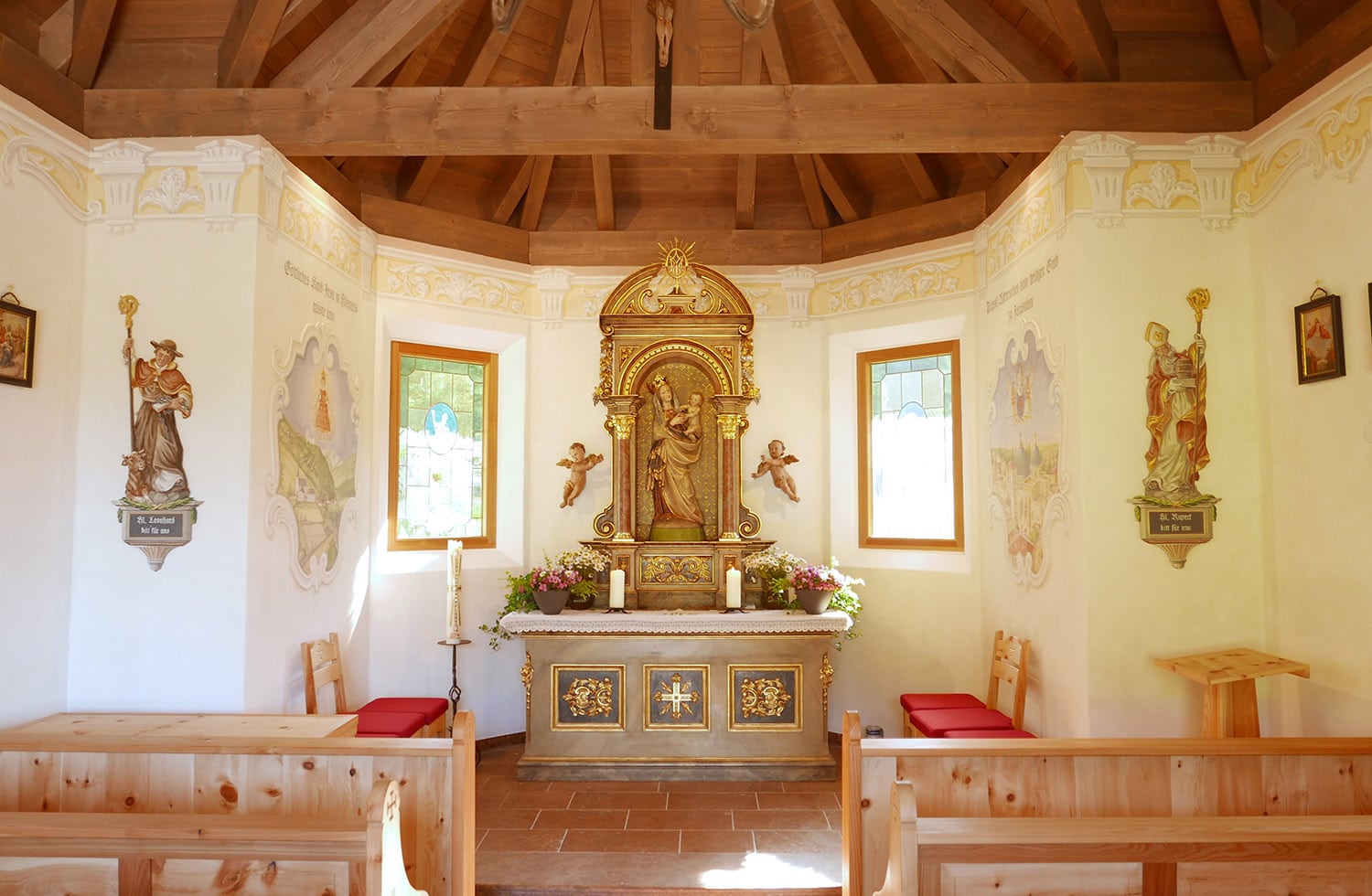
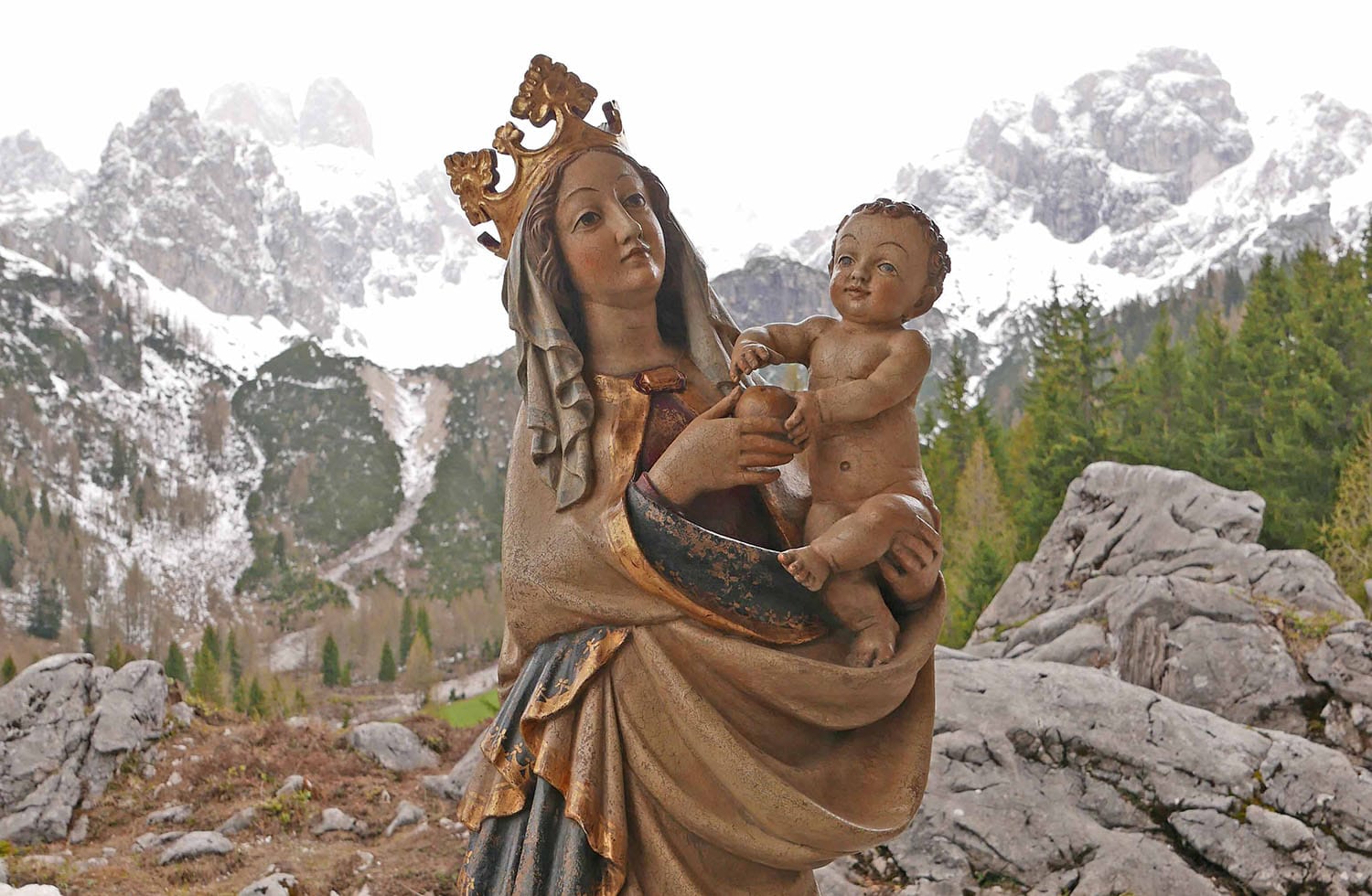
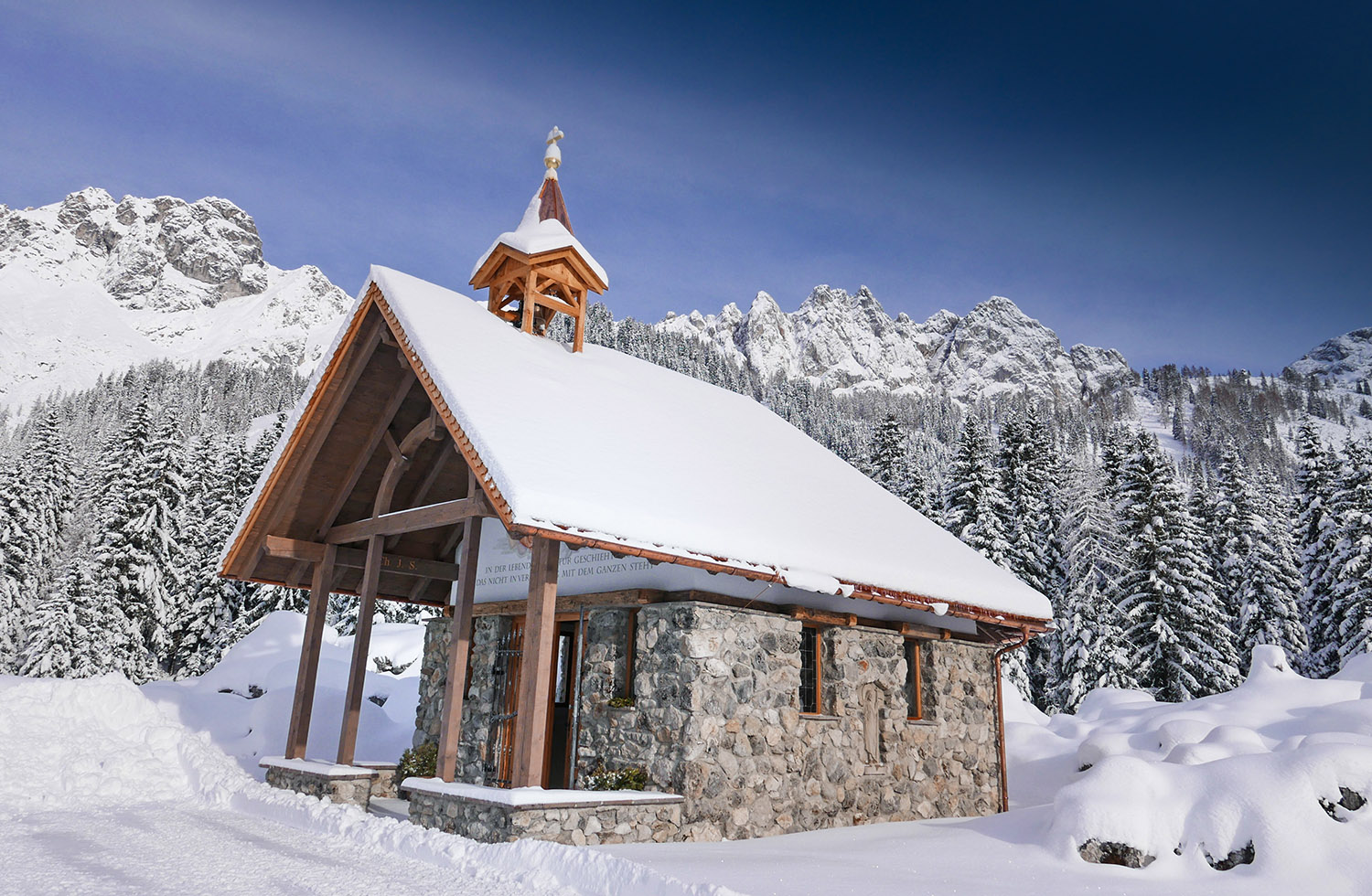
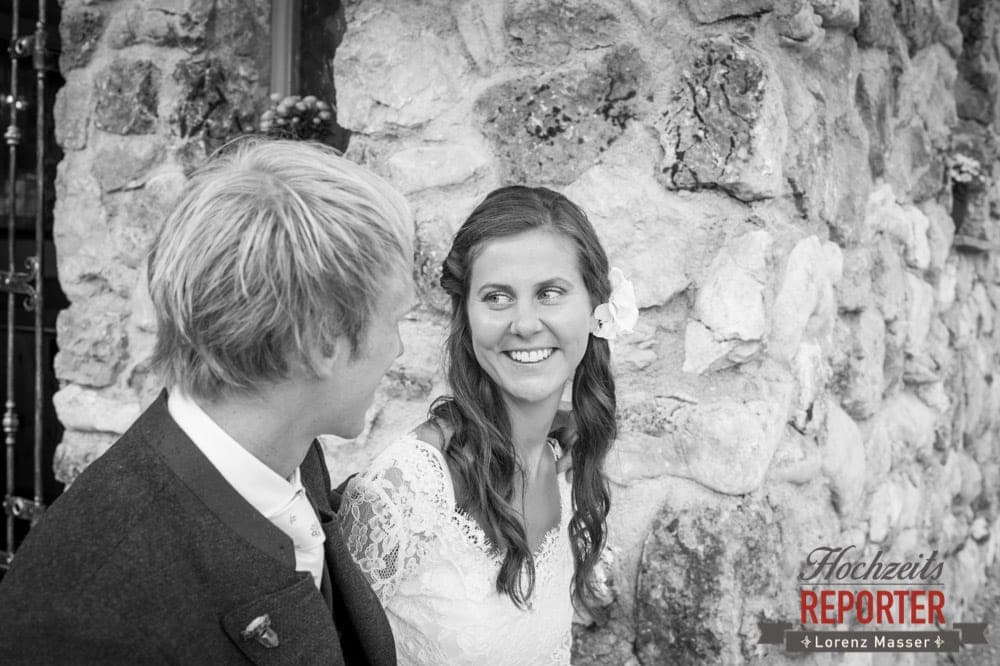
Maria am Steineggl
The beautiful chapel, the heart of the Alm
We thank Hanni and Christian for this unique sacral building. It was their wish for decades to build a chapel on their own mountain pasture. On Hanni’s 60th birthday, the realization of this idea began and construction began on July 14, 2015. The chapel is dedicated to Saint Mary in memory of Christians grandmother, Maria Salchegger. The place where the chapel stands is called “Steineggl” and is named to the chapel “Maria am Steineggl”.
The ancestors of the German poetess Agnes Miegel, born on 9. 3. 1879 in Königsberg, deceased on 26. 10. 1964 in Bad Salzuflen, lived at the Oberhofgut and emigrated in 1732 in the course of the expulsion of the Salzburg Protestants to East Prussia. At that time, 20,000 Protestants left the province of Salzburg. To make the chapel truly perfect, a bell was cast by the “Grassmayer bell foundry”. The late baroque altar, donated by Hermann Hinterhölzl, originates from a chapel in Bad Wörrishofen in the Algäu. Hanni and Christian acquired a replica of the beautiful Madonna of Thorn in South Tyrol, in Ortisei in Val Gardena. It adorns the altar splendidly. Saint Rupert and Saint Leonhard can be seen in front of the altar. The walls of the magnificent chapel show right next to the altar the “Filzmooser Kindl” in a red dress and the Church of the Holy Sepulchre of Jerusalem. Above the exit, a painting commemorates the expulsion of Protestants from Filzmoos in 1732.
With the inauguration ceremony on 05 June 2016, the blessing was given by the Archbishop of Salzburg, Dr. Alois Kothgasser, who also added the relics of the Salzburg patron saint of the HL. Rupert and HL. Virgil and HL. Martin to the altar.
Therefore, on 13 May 1988, a commemorative plaque was unveiled by the then Governor of Salzburg, Dr Wilfried Haslauer, in a large ceremony at the Oberhof.
Interresting fact
